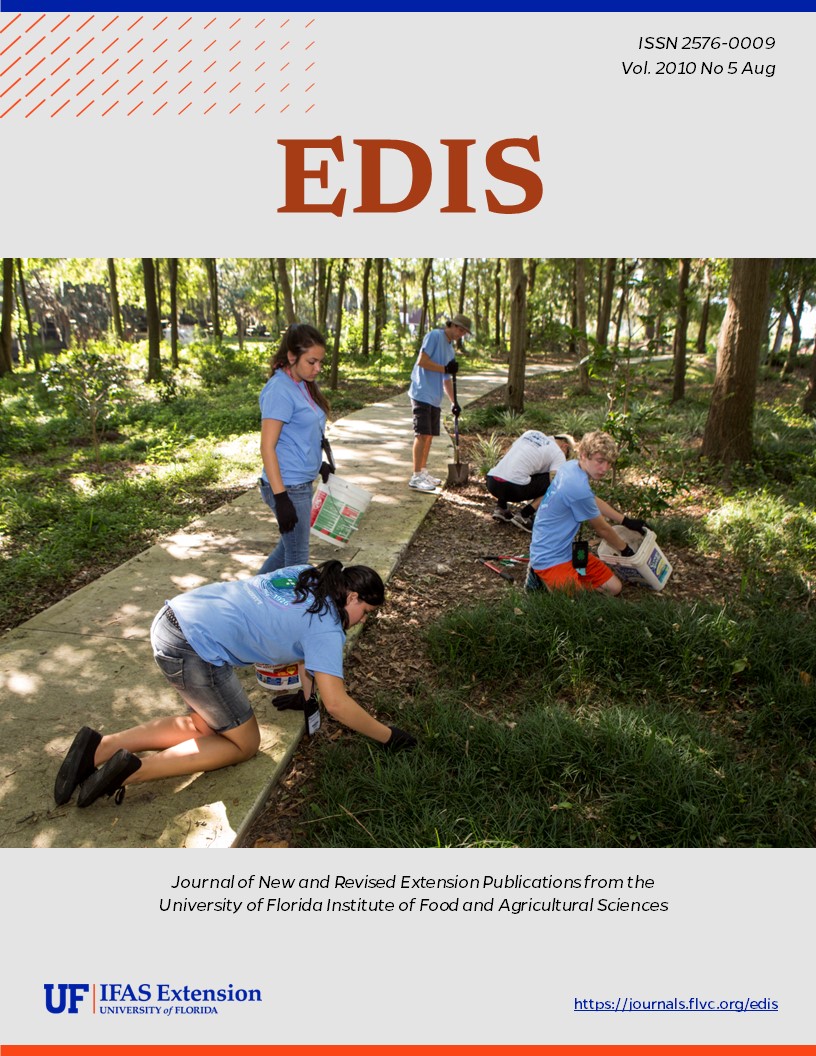Abstract
FOR269, a 3-page illustrated fact sheet by Tyler Dreaden and Jason Smith, describes this damaging forest pathogen that infects a wide range of species, including southern pine, and can cause tree mortality, reduced growth rates, susceptibility to attack by bark beetles, and regeneration failure. Includes references. Published by the UF School of Forest Resources and Conservation, July 2010.
References
Asiegbu, F. O., A. Adomas, and J. Stenlid. 2005. Conifer root and butt rot caused by Heterobasidion annosum (Fr.) Bref. s.1. Molecular Plant Pathology 6:395-409. https://doi.org/10.1111/j.1364-3703.2005.00295.x
Barnard, E. L. 1999. Annosum Root Rot of Pines in Florida. Florida Department of Agriculture and Consumer Services, Division of Plant Industry, Gainesville. Plant Pathology Circular No. 398.
Barnard, E. L., S. P. Gilly, and W. N. Dixon. 1991. Incidence of Heterobasidion annosum and other root-infecting fungi in residual stumps and roots in thinned slash pine plantations in Florida. Plant Disease 75:823-828. https://doi.org/10.1094/PD-75-0823
Robbins, K. 1998. Annosus Root Rot in Eastern Conifers. U.S. Department of Agriculture Forest Service. Forest Insect & Disease Leaflet 76.
Sinclair, W. A., and H. H. Lyon. Diseases of trees and shrubs. Root and Butt Rots caused by Heterobasidion Species. Second edition. Ithaca. Comstock publishing associates. 2005. 332-335.

